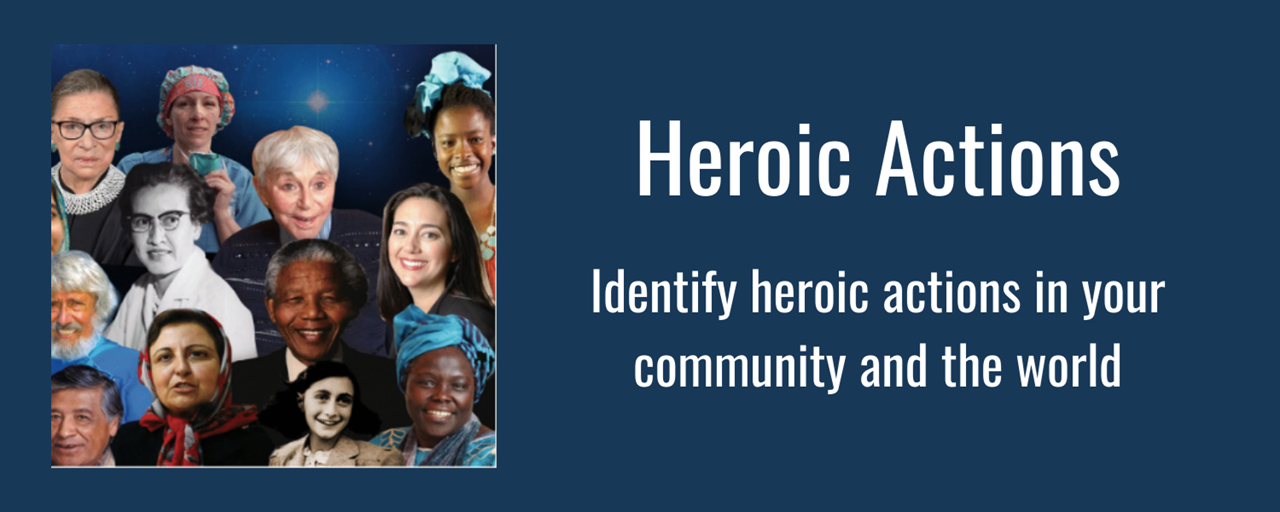Overview: The purpose of this section is to identify heroic actions in various situations. It is especially applicable to elementary school students who are learning about personal responsibility and the attributes of being a “good citizen.”
Students are expected to be able to:
-Distinguish between heroic and non-heroic actions in teacher-provided scenarios.
-Write a scenario depicting an “everyday” sort of situation in which heroic and non-heroic actions are shown.
Step One:
Review the definition/description/characteristics of heroes as discussed in Units I and Unit II. Hopefully, students will recognize that the actions of the heroes they have studied may apply to situations in their own lives.
Step Two:
- Break up into small groups or partners. Assign scenarios depicting situations that could occur in the students’ world. (It is strongly recommended that you include situations the students make up, as noted in No. 3 below.)
- Ask students to determine what would be the “heroic action” in these situations and why. What would be the probable outcome of this action? Role-playing may be used in addition to discussions and/or debates.
- Ask students to think what they might do in these situations and why. What would be the probable outcome of their actions? Older students can develop and present plays, radio broadcasts or songs.
- For younger groups, read your chosen situations to the class and discuss the above questions as a group.
- Have older students present the situations, then discuss and debate the responses. You may want to challenge the older high school or college students with such questions as, “What do you do when there seems to be no viable solution to the conflict?”
Step Three:
- Have students devise their own scenarios and create their own resolutions to the conflicts. Role-playing often works well for this.
Step Four: Culminating or Wrap-up Activity
- In developing a culmination activity, consider relating it to heroes you studied in the earlier units. Include the situations these heroes encountered and how those situations are similar to those your students face today. The culmination activity does not necessarily mean one in which there are “answers,” but rather a way to tie together the definitions of a hero.
- Questions that might be useful for culmination activities include:
a. How do the heroes from the past influence our thoughts today?
b. Are heroes still important today?
c. Is there still a place for heroes today, and if so, what is it?
- Challenge your students to offer their own thoughts as essays, scripts for plays, music lyrics, art, or other forms of expression that allow them to apply what they learned to their own lives.
Comments:
Heroic Actions is an especially useful topic for addressing the personal and group dilemmas of anyone from children to adults. Activities for this lesson may be used within the confines of your classroom, extended to the larger campus for college students or expanded into the community for life learners. Older students’ activities could include role-playing, discussion, debates, writing/producing plays, radio broadcasts, and songs.
Creating MY HERO Web pages about individual heroes is a powerful and long-lasting method of empowering the individual and passing on the story.
